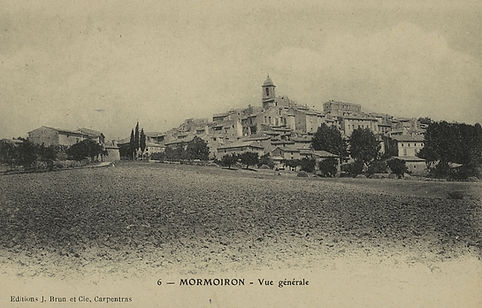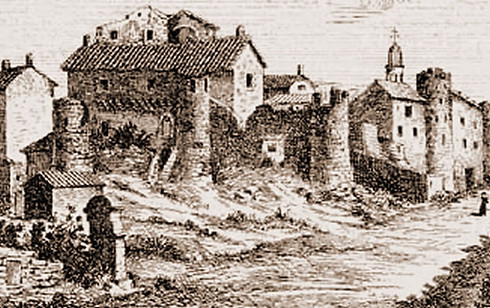Raimond de Mormoiron
Lords of Modène



From Provence to the Russian Court: The Noble House of Raimond de Mormoiron, Counts of Modène.
The Raimond (or Raymond) de Mormoiron family, sometimes styled Raimond de Modène, was an old Provençal noble house with roots in the Comtat Venaissin and the region of Carpentras. The family name derives from the village of Mormoiron, located near the slopes of Mont Ventoux in southern France. Noblesse d’extraction, the Raimond de Mormoiron family rose through centuries of royal service, military distinction, and territorial acquisition.
By the 17th and 18th centuries, they had adopted the title Comte de Modène, likely derived not from the Italian duchy but from a local fief or landholding that carried that name or evoked its prestige.




The House of Raimond.
The House of Raimond, lords of Modène in the County of Venaissin, flourished as early as the mid-11th century among the old chivalric nobility of Languedoc, Provence, Dauphiné, and the County of Avignon.
Its numerous branches, spread across these various provinces at such an early time, have so far allowed only conjectures as to the precise line from which it originated. However, the rank and esteem it held at the courts of the Counts of Toulouse and Provence, and of the Counts of Béziers, to whom its earliest ancestors were attached as high barons, leave no doubt as to its Languedocian origin.
Be that as it may, the House of Raimond held substantial possessions in the Diocese of Carpentras by the middle of the 13th century, and from that time onward, it consistently maintained, through its service and alliances, a place among the most prominent and illustrious families of the County.
Boson II, Count of Provence, is said to have granted the seigneury of Modène to the House of Mormoiron, which held it at least until 1279. It then passed into the hands of the Raimond family. In 1362, Bertrand de Raimond rendered homage for Modène to the rector of the Comtat, Philippe de Cabassole. This confirms a historical transition: the House of Mormoiron was the first known seigneurial holder of Modène, under a grant from a sovereign count of Provence, but by the 14th century, the Raimond family had become its lords, a position officially recognized through feudal homage. This would mark the Raimond family's elevation into the upper nobility of the Comtat Venaissin.
Philippine de Mormoiron, heiress of her family, transferred the seigneuries of Modène, Urban, La Roque-Alric, and part of Caumont to her husband, Geoffroy de Venasque, in 1421.
The seigneury of Modène did not remain long in the hands of the Venasque family, as this house became extinct three generations later with Marie de Venasque. Her considerable estates then passed to her husband, Jean de Raimond, who thereby recovered what his family had lost several decades earlier. A squire to King Louis XI, Jean became lord of Modène and of the other contadine (Comtat-based) seigneuries.
François, son of Jean de Raimond, was the first to adopt the name Raimond de Mormoiron, marking the formal reuniting of the two family lines and their historic territories.
The Raimond de Mormoiron de Modène
François de Raimond de Mourmoiron had two wives.
The senior branch, descended from his first wife, retained the seigneury of Modène until 1620, when Marie Raimond de Montlaur, Countess of Montlaur, transferred it to her cousin François, known as "Gros Modène". "Gros Modène", whose real name was François Raimond, was born in 1570 and married in Carpentras. He had four children, among whom the most notable was Esprit de Raimond-Modène (1608–1673), known as “the Count of Modène”. A cultured and refined figure, Esprit was raised at court under the guidance of his father. He spent his childhood alongside Gaston d’Orléans, the brother of the future King Louis XIII, with whom he was of similar age. Their close companionship continued into adulthood: Esprit became Gaston’s page and remained so devoted to him that, by 1634, he had risen to the rank of chamberlain (chambellan) to the prince.
Esprit de Raimond-Modène experienced a troubled marriage and a difficult end to his life.
Upon his death in 1669, his brother Charles de Raimond acted swiftly: on behalf of his own son, he had the seigneury of Modène and its dependencies officially recognized by the Apostolic Chamber (Chambre apostolique), the papal authority governing the Comtat Venaissin.
Charles-Louis-François-Gabriel de Raimond de Mormoiron.
One of the most notable figures of the family was Charles-Louis-François-Gabriel de Raimond de Mormoiron, Count of Modène (1774–1833). During the upheavals of the French Revolution and Napoleonic era, he entered Russian service, a common path for displaced or ambitious French nobles. In Russia, he became known as Gavriil Osipovich Raimond de Mormoiron and was accepted into the ranks of the aristocracy, where French noble lineage remained highly respected. His integration into Russian high society was sealed by his marriage to Elisabeth Alexandrovna Saltykova, daughter of Field Marshal General Nikolai Ivanovich Saltykov and a lady-in-waiting to the Empress. This union symbolized the merging of French noble distinction with Russian imperial prestige.
Though the family did not maintain a lasting separate identity in Russia - its members and descendants became absorbed into the wider aristocracy - the Raimond de Mormoiron de Modène legacy reflects the wider diaspora of French nobility following the Revolution, and the ways in which noble houses preserved their status through foreign alliances, courtly marriages, and military service abroad.
It appears that the Raimond–Modène noble line has come to an end in the male line. The family’s direct male line traces down through the Huguenet-Modène branch. The last known male member, Charles Huguenet‑Modène, died in 1908. Thus, the noble house of Raimond‑Modène appears to be extinct in the male line, with no known legitimate heirs today carrying the family name.


Gerry's Collection of Antique Seal Stamps.
